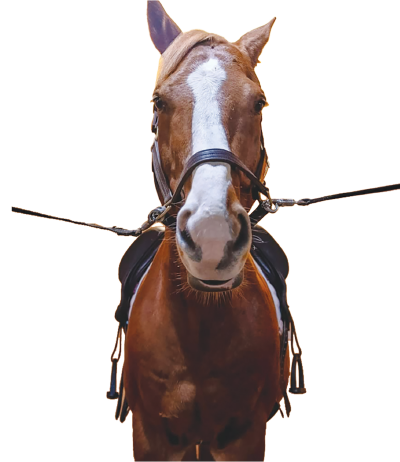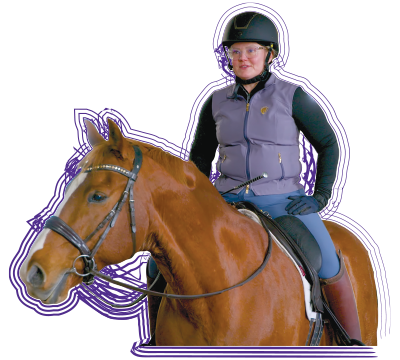
The treatment was a long road, but one that was well worth it.
Sam’s Diagnosis
For Tammy Shivers, her relationship with Sam, her 13-year-old Irish Sport Horse, is more than just ownership—it’s a partnership that’s been built over years of working together. Shivers got Sam when he was nine months old, and she had hoped he might work well as a hunter jumper. However, Sam’s lack of enthusiasm for jumping led Shivers to explore the world of dressage. Together, Shivers and Sam climbed the ranks, most recently competing at third level and schooling at fourth level.
Throughout 2023, Shivers began noticing subtle but troubling changes in Sam’s behavior. “He was spookier than usual at things that normally wouldn’t bother him, he was really lazy off of my right leg, and just felt resistant to going forward. His appetite was a little on and off,” Shivers recalls. While these signs were not dramatic, Shivers knew her horse well enough to sense something was off. Despite trying dietary changes and over-the-counter ulcer treatments, the issues persisted, and after a year of frustration, Shivers decided it was time to seek expert help and brought Sam to the MSU Large Animal Clinic in December of 2023.
At MSU, Sam underwent a gastroscopy that revealed two small, healing ulcers and a moderately large, raised polyp in his stomach. Drs. Lauren Bookbinder and Emily Hess diagnosed Sam with mild equine squamous gastric disease and identified the polyp, which contained three strains of bacteria, as a potential concern. Sam began treatment with a combination of medications and antibiotics, and Shivers was very conservative as she slowly put Sam back to work. Initially, the treatment seemed successful, and the ulcers looked like they were clearing up. But within weeks, his ulcers recurred, and the polyp remained.
A Pioneering Procedure
Sam’s care team began to discuss the pros and cons of removing the polyp. Due to its nature and location, snaring the polyp or trying to loop anything around it was not possible. Bookbinder began exploring alternative approaches. “I had a colleague over in the UK, Dr. Richard Hepburn, who has been laser ablating a lot of these polyps,” says Bookbinder. “That’s actually a common procedure for people. So, we looked into how we could offer that to Sam.” While this procedure had been documented as successful in the UK, it had not been performed at MSU or any other large referral hospitals within a reasonable traveling distance for Shivers.

“We were apprehensive because they had never done it before,” says Shivers.“It wasn’t something we took lightly. But we knew we tried all other avenues to go after this polyp and it wasn’t working, so we decided to give it a shot. Dr. Bookbinder did her due diligence and worked with colleagues in the UK who helped talk her through it, so I felt comfortable.”
Over the course of three sessions, spaced three weeks apart, Sam underwent laser ablation. Each session required fasting, sedation, and the precise application of laser energy to the polyp. “It is not possible to completely predict if a horse’s behavior and comfort will improve following the ablation,” says Bookbinder. “Like many of the things we do, we can’t be sure how much it will clinically affect the horse.” But for Sam, the results were promising from the beginning. After each session, follow-up gastroscopies showed steady progress, and after the final ablation, the polyp was no longer visible.

It was a relief to see the polyp gone and to see him feel so good.
For Shivers, the treatment was a long road, but one that was well worth it. “It was a lot of fasting for Sam, and a lot of stress driving two hours on the road each way and spending nights at the Hospital,” says Shivers. “It was a relief to see the polyp gone and to see him feel so good.”

A New Chapter
Now, more than seven months after the final laser, Sam is doing great. “He’s just full of energy,” beams Shivers. “He wants to work, wants to train.” Shivers credits a lot of the success of Sam’s treatment to the collaborative relationship she shared with the clinicians on the case. “From the minute I stepped foot into the facility, the MSU team was listening to me. They were attentive, and they knew how special my horse was to me. I could email or text them if I had any issues or concerns, and they answered all my questions. I saw them once a month, and they were always happy to see Sam.”
Looking ahead, Shivers is optimistic about her future with Sam. “We’re hoping we can get him fit and back in the competition ring next year,” she says. “I’m getting used to this new horse. It feels so good to have a happy partner.”